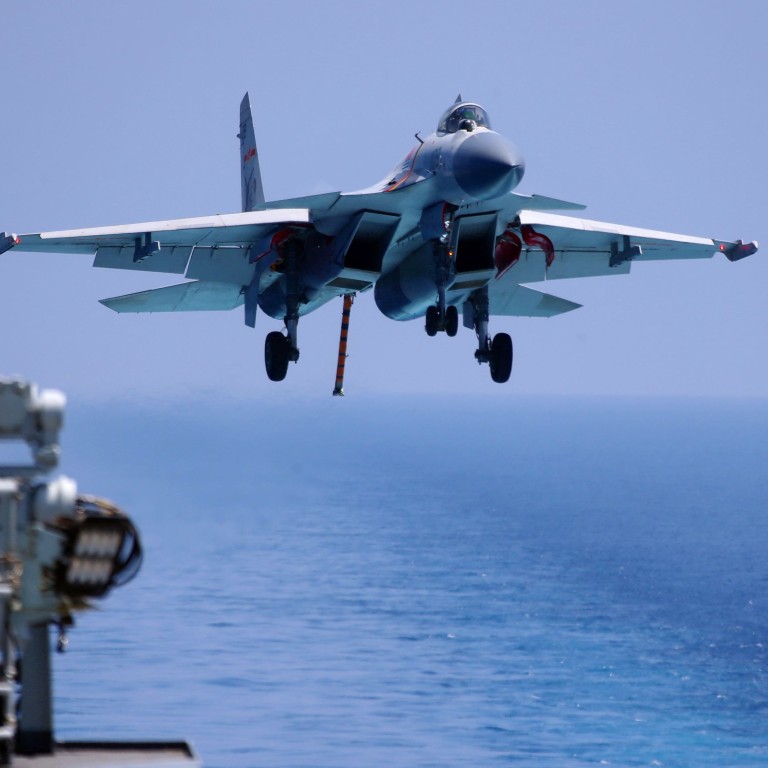
China military’s new Shandong aircraft carrier set to have smaller fighter jet force than expected
- CCTV footage indicates that the vessel might have just 24 J-15s on board rather than the 36 previously expected
- The carrier also needs more time to get up to minimum operational speed, observers say
About 30 carrier-based fighter jet pilots were present on Tuesday when President Xi Jinping commissioned the Shandong in Sanya, Hainan province, according to footage aired by state broadcaster CCTV.
The turnout suggested that there were only enough pilots for two squadrons, or 24 J-15 fighter jets, instead of 36 as previously suggested by state media.
“The standard ratio of carrier-based fighter jets to pilots is [2:3],” Beijing-based naval expert Li Jie said. “The Shandong won’t have many fighter jets because it is just entering its initial commissioning period.”
China is working on a new fighter jet for aircraft carriers to replace its J-15s
But Beijing-based military expert Zhou Chenming said that while the Shandong had more hanger space than its predecessor, it would be impossible for the Shandong to have as many as 36 J-15s on board.
“The J-15 is quite big, and it’s impossible for an aircraft carrier to only carry fighter jets,” Zhou said.
The People’s Liberation Army Navy plans to have a fleet of four aircraft carrier strike groups and has stepped up jet pilot training in the last year, opting to train cadets from naval aeronautical universities rather than enlist experienced pilots from the air force.
Li also said the Shandong had not attained “initial operational capability” (IOC), the basic standards for deployment.
“It needs more time,” he said.
The Liaoning reached IOC in May last year, six years after it was commissioned.
China spent more than a decade developing the J-15, based on a prototype of a fourth-generation Russian Sukhoi Su-33 twin-engined air superiority fighter – a design that is now more than 30 years old.
The J-15 is the heaviest active carrier-based fighter jet in the world but the sole carrier-based fighter in the Chinese navy.
Due to the ski-jump launch ramp design on both the Liaoning and Shandong, the take-off time needed for a J-15 is about three times that for its American counterparts such as the F-18.
“The steam catapults on the US Nimitz-class aircraft carrier take about 45 seconds to launch an aircraft, but the ski-jump ramp takes 1½ to 2 minutes,” Li said.
Engine boost for China’s J-15 fighter jets as Beijing tries to build up navy
Another source close to the Chinese navy said the Liaoning could launch up to 14 J-15 fighter jets in one flight trial, compared with 40 by a Nimitz-class ship.
“The Liaoning and Shandong so far can only be used for defensive purpose, because the Kuznetsov class was designed to have powerful missile systems, rather than launch fighter jets,” the source said.
Zhou and Li said that in total the Shandong could have up to 48 aircraft, including at least two dozen J-15s and a dozen helicopters.
“Helicopters play a key role in alerting and watching take-off and launches of carrier-based fighter jets. They are also needed for rescues and other missions like transporting troops and equipment,” Zhou said.

